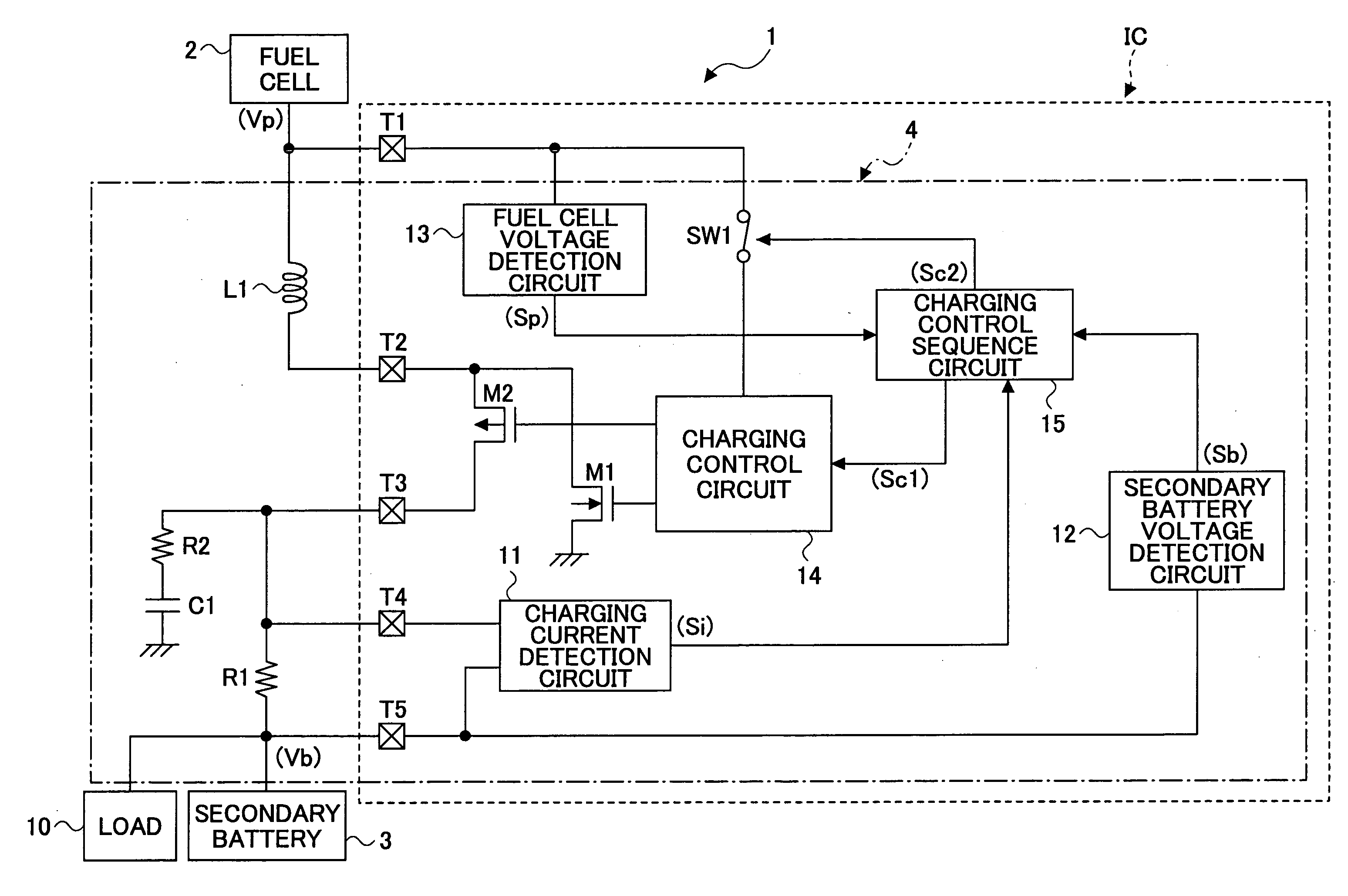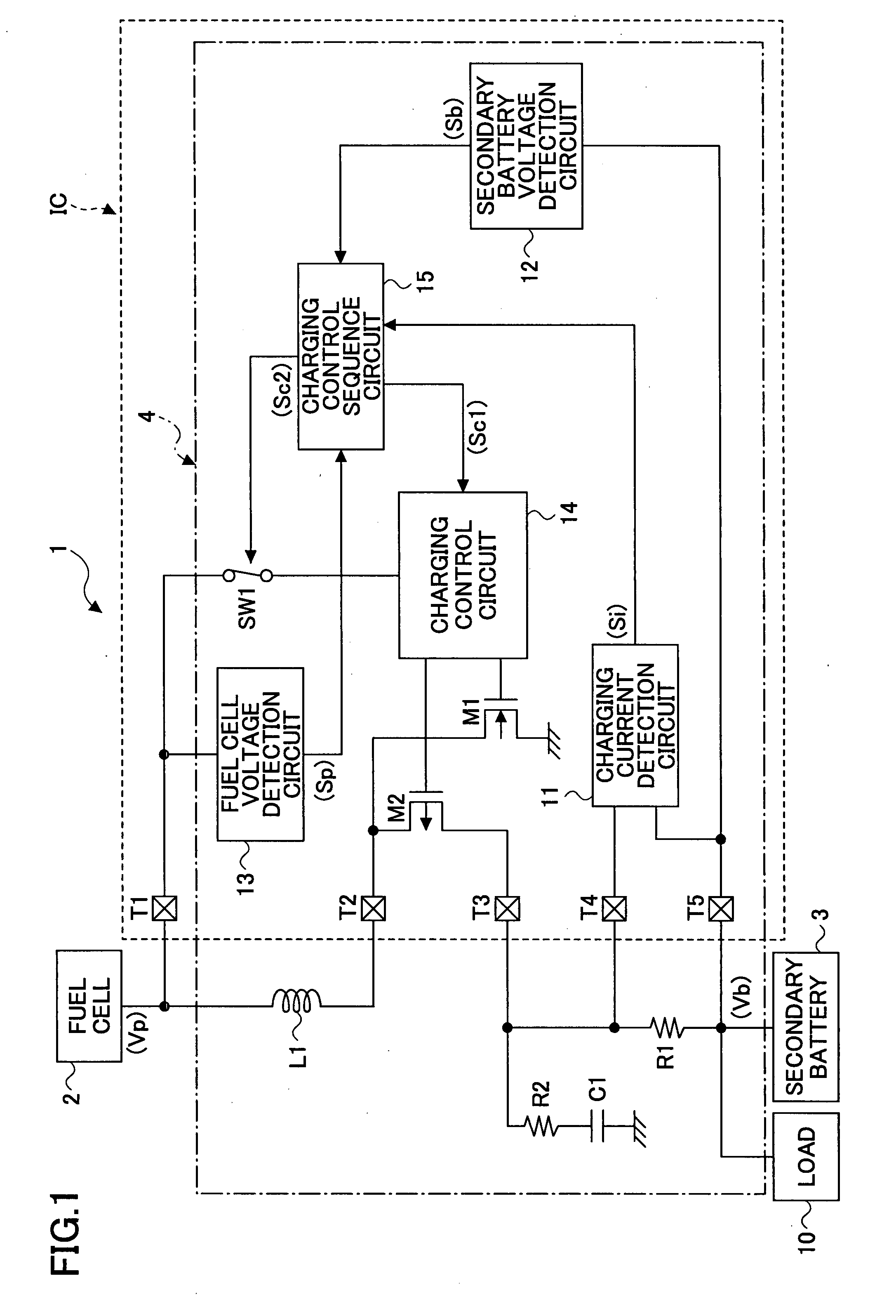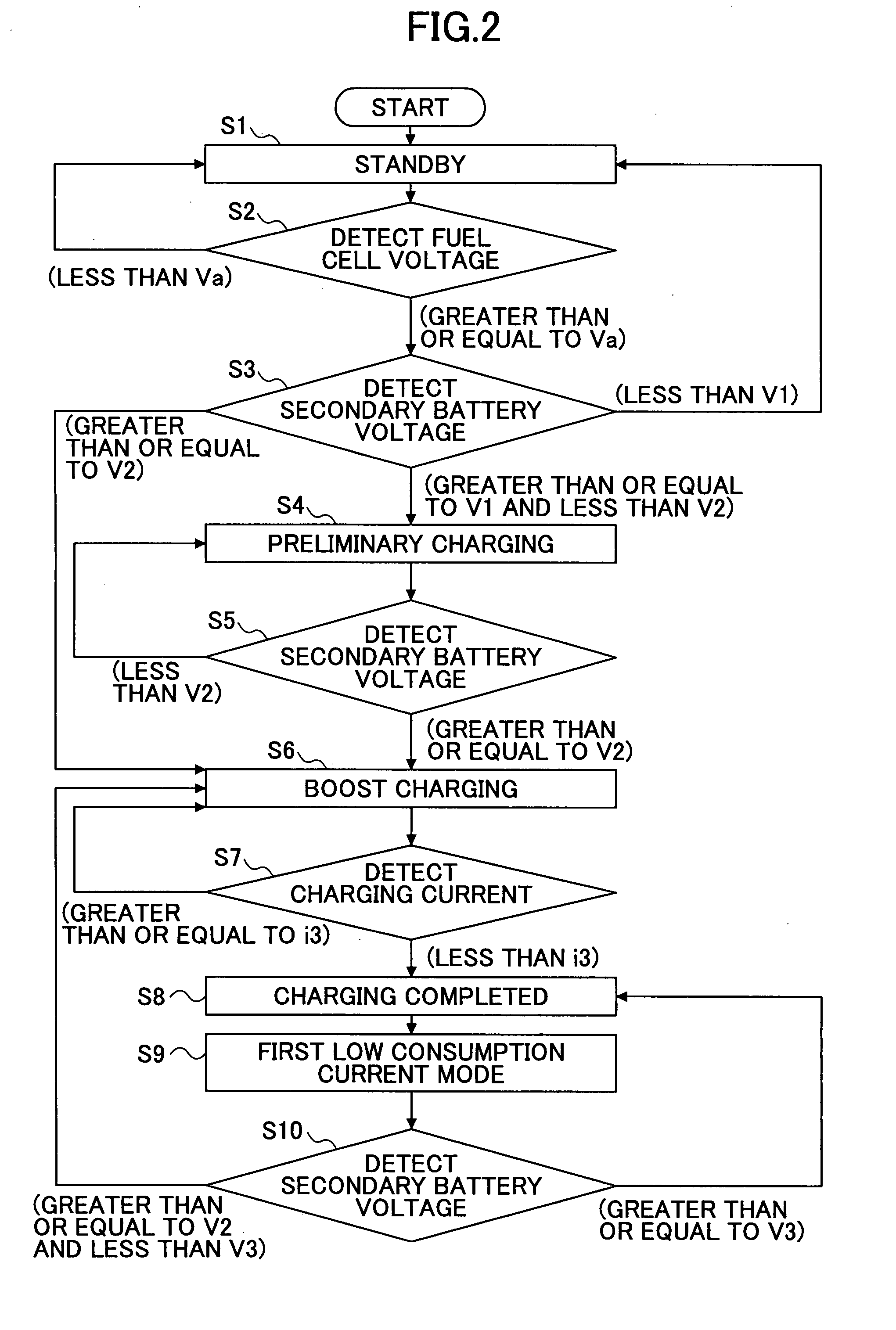Charging circuit, method of controlling operation of charging circuit, and power supply unit
a charging circuit and charging circuit technology, applied in secondary cell servicing/maintenance, electrochemical generators, greenhouse gas reduction, etc., can solve the problems of more than ever increasing the electric power consumption of the device, the general low power efficiency of the cell, and the shortening of the standby time of the mobile phone, so as to improve the power efficiency of the mobile device and reduce the consumption of scarce current.
- Summary
- Abstract
- Description
- Claims
- Application Information
AI Technical Summary
Benefits of technology
Problems solved by technology
Method used
Image
Examples
first embodiment
[0047]FIG. 1 is a block diagram showing a configuration example of a power supply unit having a charging circuit according to a first embodiment of the present invention.
[0048] In FIG. 1, a power supply unit 1 includes a fuel cell 2 which outputs a generated voltage Vp, a secondary battery 3 composed of a lithium-ion battery, a charging circuit 4 which charges the secondary battery 3 with the voltage obtained by boosting the fuel cell voltage Vp as a battery voltage of the fuel cell 2.
[0049] The charging circuit 4 includes a switching element M1 composed of an NMOS transistor which performs a switching operation for controlling the output of the fuel cell voltage Vp, a switching element M2 for synchronous rectification composed of a PMOS transistor, an inductor L1, a capacitor C1, resistances R1 and R2, and a first switch SW1. Further, the charging circuit 4 includes: a charging current detection circuit 11 which detects the charging current to the secondary battery 3 from the bot...
second embodiment
[0070] The above-described first embodiment may be arranged so that power is supplied to the charging current detection circuit 11 through the second switch SW2, and when the fuel cell voltage Vp has dropped to less than the specified voltage value Va, the first switch SW1 and the second switch SW2 are each turned off to cut off electrical connections and the power supply to the charging current detection circuit 11 and the charging control circuit 14 is interrupted. Here, those arranged in the above manner will be described as a second embodiment according to the present invention.
[0071]FIG. 4 is a block diagram showing a configuration example of a power supply unit having a charging circuit according to the second embodiment of the present invention. In FIG. 4, components the same as or similar to those of FIG. 1 will be indicated by the same numerals and will not be described below. Here, only parts different from FIG. 1 will be described.
[0072]FIG. 4 is different from FIG. 1 i...
third embodiment
[0085] In the above-described second embodiment, when the fuel cell voltage Vp has become less than the specified voltage value Va, the power supply to the charging current detection circuit 11 and the charging control circuit 14 is interrupted. Alternatively, as a third embodiment of the present invention, there may be provided a temperature sensing circuit which senses the temperature of the fuel cell 2 to interrupt the power supply to each of the charging current detection circuit 11 and the charging control circuit 14 when the temperature of the fuel cell 2 has become greater than or equal to a predetermined value.
[0086]FIG. 6 is a block diagram showing a configuration example of a power supply unit having a charging circuit according to the third embodiment of the present invention. In FIG. 6, components the same as or similar to those of FIG. 1 are indicated by the same numerals and will not be described below. Here, only parts different from FIG. 1 will be described.
[0087]F...
PUM
 Login to View More
Login to View More Abstract
Description
Claims
Application Information
 Login to View More
Login to View More - R&D
- Intellectual Property
- Life Sciences
- Materials
- Tech Scout
- Unparalleled Data Quality
- Higher Quality Content
- 60% Fewer Hallucinations
Browse by: Latest US Patents, China's latest patents, Technical Efficacy Thesaurus, Application Domain, Technology Topic, Popular Technical Reports.
© 2025 PatSnap. All rights reserved.Legal|Privacy policy|Modern Slavery Act Transparency Statement|Sitemap|About US| Contact US: help@patsnap.com



